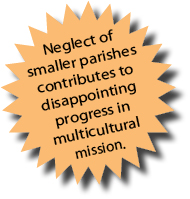Today we are witnessing the end of the Medieval Era. The Church may be the last vestige of Feudalistic Society — where communities operated, lived and served under a select group of people who protected them.
That is the model of today’s church which found its enduring structure in the Middle Ages.
Today, Philadelphia is reeling over the proclamation from Roman Catholic leaders, based on a “Blue Ribbon Commission” report, that will close or merge dozens of neighborhood parish schools. There are strong hints that this is Stage One, with church closings to be announced next year. Dangle the string in front of the mouse a bit longer.
Decisions made by church hierarchy tend to be based on their own needs and resources more than the needs and resources of neighborhoods. There was a day when loyal lay people would not venture such criticism. Yesterday’s newspapers show that day is over.
Neighborhoods are beginning to recognize that the Feudalistic Church is no longer serving their needs and mission. It is existing to protect itself. It is a bitter pill for the most dedicated church supporters. We wish it weren’t so.
Hierarchies could make changes in policies and traditions at the leadership/service end, but it’s easier to dictate change to the rank and file.
Catholics are not alone — but they are in today’s spotlight. What results from the wisdom of the Catholic leadership remains to be seen. It is likely that the decision will accelerate any existing decline. Affected congregations will lose a core part of their ministry focus. Their loyalties will not automatically transfer to consolidated schools — the hearts and souls of people just don’t work that way. The parishes who survived will not reap a windfall in support. The Church will be weakened. People will drift. Resources will be further strained. Substantial spoils of closed churches/schools, contributed by generations of neighborhood families, will go to enrich the unyielding hierarchy.
These decisions were likely based on statistics. Statistics tend to work against lay people. They are minimally involved in either collecting or reporting data. The data recorded may mean very little in a fast-changing world.
A fresh approach might be to stop measuring the people who are there and start measuring the people who are not there. Instead of measuring the services the church provides, measure the needs of the people who are not in church. This is a very biblical approach — something every congregation talks about doing, while they are measuring and reporting useless statistics.
Think about it. . . if you measure what you have, you are valuing and protecting the status quo. The church becomes a protective organization, making decisions to hang on to things as they are and hope for slight progress doing things the same old way.
If you start measuring needs and counting the people who are not in church, you are opening your community to service, mission and outreach. It will change your focus and thinking. The Bible is full of mandates to do just that.
We just have to get as good at measuring potential as we are at measuring failure.








